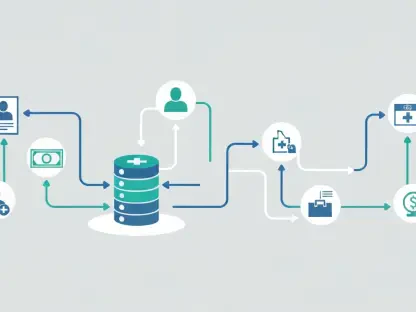The U.S. construction industry, long associated with blueprints and heavy machinery, is experiencing a dramatic digital revolution. This transformation, driven by innovative technology tools, is significantly altering how construction operations are managed and how companies approach revenue growth. The shift from traditional, labor-intensive methods to advanced technological solutions is paving the way for increased efficiency, substantial cost savings, and overall profitability. Central to this technological shift are five key innovations that have been instrumental in reshaping the industry.
Revolutionizing Project Management
To effectively manage construction schedules and ensure projects are completed on time, project management platforms such as Procore have become indispensable. Delays can be financially burdensome, but modern project management solutions provide construction teams with the capability to track timelines, assign tasks, and collaborate in real-time. By centralizing project management tasks, these platforms bring together various essential elements, such as Requests for Information (RFIs) and punch lists, consolidating them into a single, accessible location.
This reduction in administrative burdens offers a clearer picture of the financial health of projects. A report by McKinsey highlights that the widespread adoption of digital document and contract management tools is visibly enhancing process control and significantly mitigating risks. The shift towards digital solutions extends beyond merely eliminating paper; it fundamentally strengthens overall project oversight and ensures a seamless workflow throughout the project lifecycle. These tools effectively remove the guesswork and delays traditionally associated with manual methods, driving projects to be completed more efficiently and within budget.
Enhancing Cash Flow with Payment Compliance Tools
Maintaining steady cash flow is one of the most significant financial challenges in the construction industry, but innovations in payment compliance tools and online payment platforms are addressing this issue head-on. Traditional payment processes are often riddled with procedural bottlenecks that can delay payments. Automated payment solutions are transforming this landscape. Platforms like Handle streamline online payments and manage notices and lien waivers for contractors, subcontractors, and material suppliers, ensuring that financial transactions are processed quickly and efficiently.
Enhanced payment processing, quick dispute resolution, and clear financial obligation management are among the many benefits these tools offer. Additionally, these systems facilitate the organization of documents for regulatory compliance and audit readiness. By embracing digital payment solutions, construction firms can ensure the timely completion of projects and approach future undertakings with improved financial stability. These tools provide an organized and efficient way to handle finances, giving companies the confidence to take on new projects without the fear of cash flow uncertainties.
Maximizing Asset Utilization with Equipment Management Software
The management of heavy machinery, a substantial investment in the construction industry, is being revolutionized by equipment management software designed to maximize asset utilization. These software tools are critical for profitability as they monitor equipment usage, track maintenance schedules, and help prevent unexpected downtime. Leveraging data to predict necessary services ensures that machines remain operational and that projects continue on track without costly interruptions.
Research indicates that effective equipment management can result in a 25% increase in asset utilization rates. This directly translates into cost savings and more efficient project execution. By keeping machinery in optimal condition and thereby avoiding costly delays, companies can extend the lifespan of their equipment, further enhancing profitability. The data-driven approach provided by these software tools is a game changer for the industry, enabling construction firms to make informed decisions and maintain their machinery in top working condition.
Reducing Material Costs with Supply Chain Management Platforms
Advanced supply chain management platforms are playing a transformative role in reducing material costs, a critical aspect of construction project budgets. These tools empower contractors to monitor material orders, optimize inventory, and negotiate favorable vendor terms, which are essential for maintaining profitability. By precisely tracking each step of the supply chain, companies can avoid delays caused by material shortages and make better purchasing decisions.
Insights into order patterns allow businesses to forecast material needs and minimize waste. A Deloitte study reveals that adopting advanced supply chain management systems can reduce material costs by up to 15%. This is a substantial cost-saving measure in a competitive market. These platforms provide a strategic advantage by ensuring that materials are available when needed and by avoiding the pitfalls of overstocking or understocking. By optimizing supply chain management, construction firms can significantly enhance their operational efficiency and cost-effectiveness.
Leveraging Construction Financial Analytics
Understanding the financial state of a construction project can be complex, but the significance of financial analytics platforms in this context cannot be overstated. These platforms offer detailed insights into project expenses, budgets, and cash flows, enabling contractors to identify trends, anticipate risks, and make confident, data-backed decisions. Predictive analytics further enhance planning by providing projections based on historical data, allowing businesses to better plan for future projects.
This data-backed financial planning is a valuable asset in navigating unpredictable economic conditions. Financial analytics help optimize financial outcomes and ensure the long-term sustainability of construction firms. By leveraging these tools, companies gain a comprehensive understanding of their financial health, enabling them to make informed decisions that drive profitability. The use of predictive analytics offers a forward-looking approach that is essential for strategic planning and risk management in the construction industry.
Embracing a Tech-Centric Approach
The U.S. construction industry, traditionally known for its reliance on blueprints and heavy machinery, is undergoing a remarkable digital transformation. This major shift is propelled by cutting-edge technology tools, fundamentally changing how construction projects are managed and how companies drive their growth. Moving away from conventional, labor-intensive practices, the industry is now embracing advanced technological solutions that are leading to greater efficiency, notable cost reductions, and higher overall profitability.
At the heart of this transformation are five key innovations that are playing a pivotal role in reshaping the landscape of construction. These technologies not only streamline operations but also open new avenues for revenue generation. From advanced data analytics to automation and robotics, these tools are enabling construction firms to optimize their resources, minimize waste, and improve project timelines. BIM (Building Information Modeling) is another critical innovation, allowing for better planning and coordination among various stakeholders. As a result, the U.S. construction sector is not just evolving but is set to thrive in an increasingly digital world.









